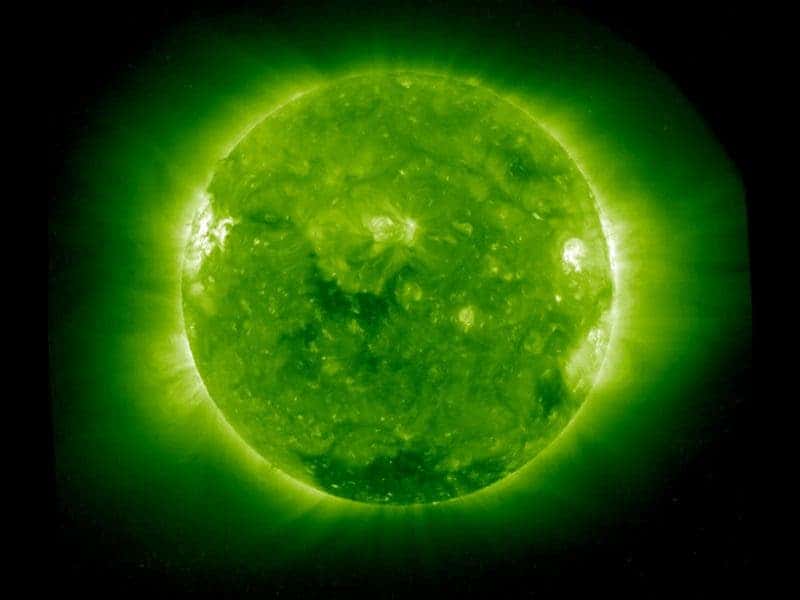Using images of the Sun and strong processing algorithms, scientists have observed solar winds emerging from the corona.

Solar wind is a stream of charged particles released from the upper atmosphere of the Sun. First described as a phenomenon in 1859, it has been observed only in the 1960s. But scientists wanted to know how the solar wind looks like when it first forms, inside our star’s corona.
“This is part of the last major connection we need to make to understand how [the Sun] influences the environment around the Earth,” Craig DeForest, an astrophysicist at the Southwest Research Institute in Boulder, Colo., told Eos. DeForest is the lead author on a new paper describing the novel technique, published last week in the Astrophysical Journal.
Visualizing and understanding solar wind is not just an academic task – it can be extremely important for our modern society. The solar wind is responsible for the overall shape of Earth’s magnetosphere, interacting with it very strongly. The magnetosphere is the magnetic analog of the atmosphere. When there are changes in the wind’s speed, density, direction, and entrained magnetic field, our own planet’s magnetic field can be greatly affected. For instance, GPS satellites can be very vulnerable to this. Space weather can also knock out telecommunications, short out satellite circuitry, and damage electrical transmission lines which could cause immeasurable damage on Earth. So much of our modern technology on which we are so reliant can be threatened by solar wind.
But studying the formation of solar wind is no easy feat. The corona is very bright, and the solar wind is very faint, imposed on a background of stars and interplanetary dust. Whenever they tried to look at it before, they couldn’t realize exactly when it was forming.
So they applied an image processing algorithm, removing objects of fixed brightness (such as the stars on the background), exposing emerging features like the wind. The approach turned out to be successful, and the formation of the wind was visualized.
The new analysis already revealed some interesting things, showing that when the material travels a third of the distance to the Earth, the magnetic fields start to weaken enough for the particles to dissipate. This will help scientists to better predict the arrival and strength of the Sun’s outbursts, which, as mentioned above, can make a big difference.
Was this helpful?



